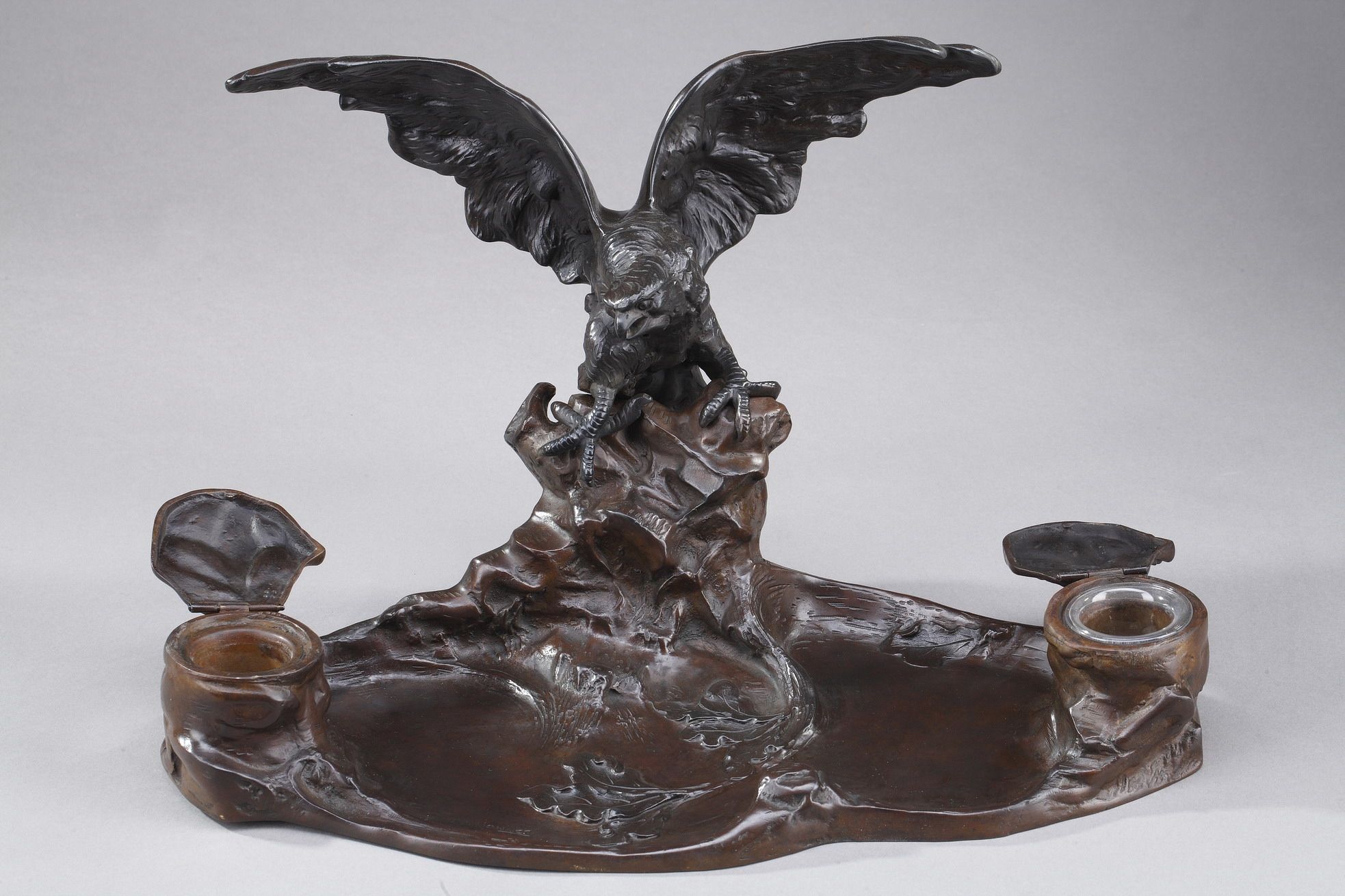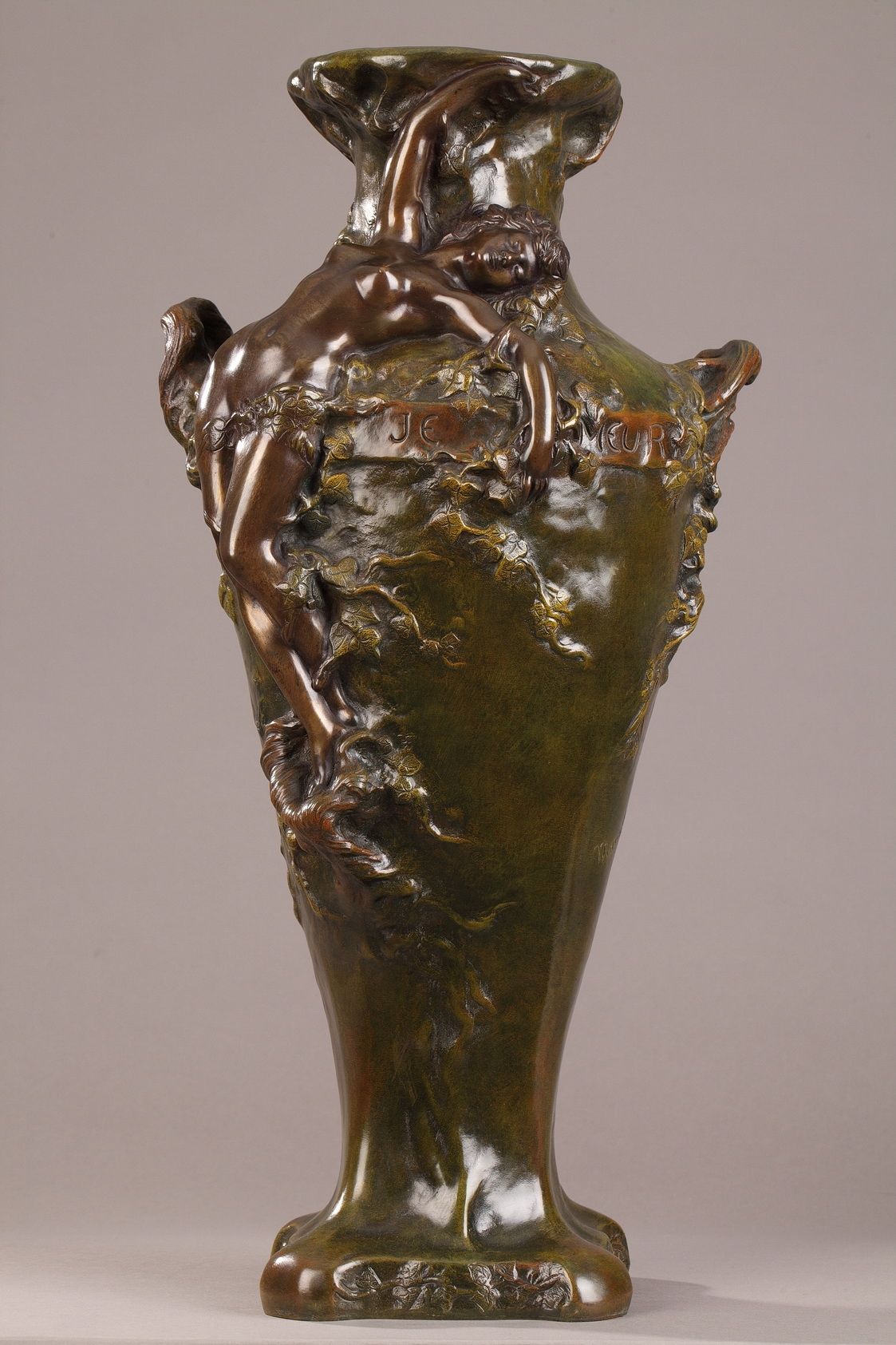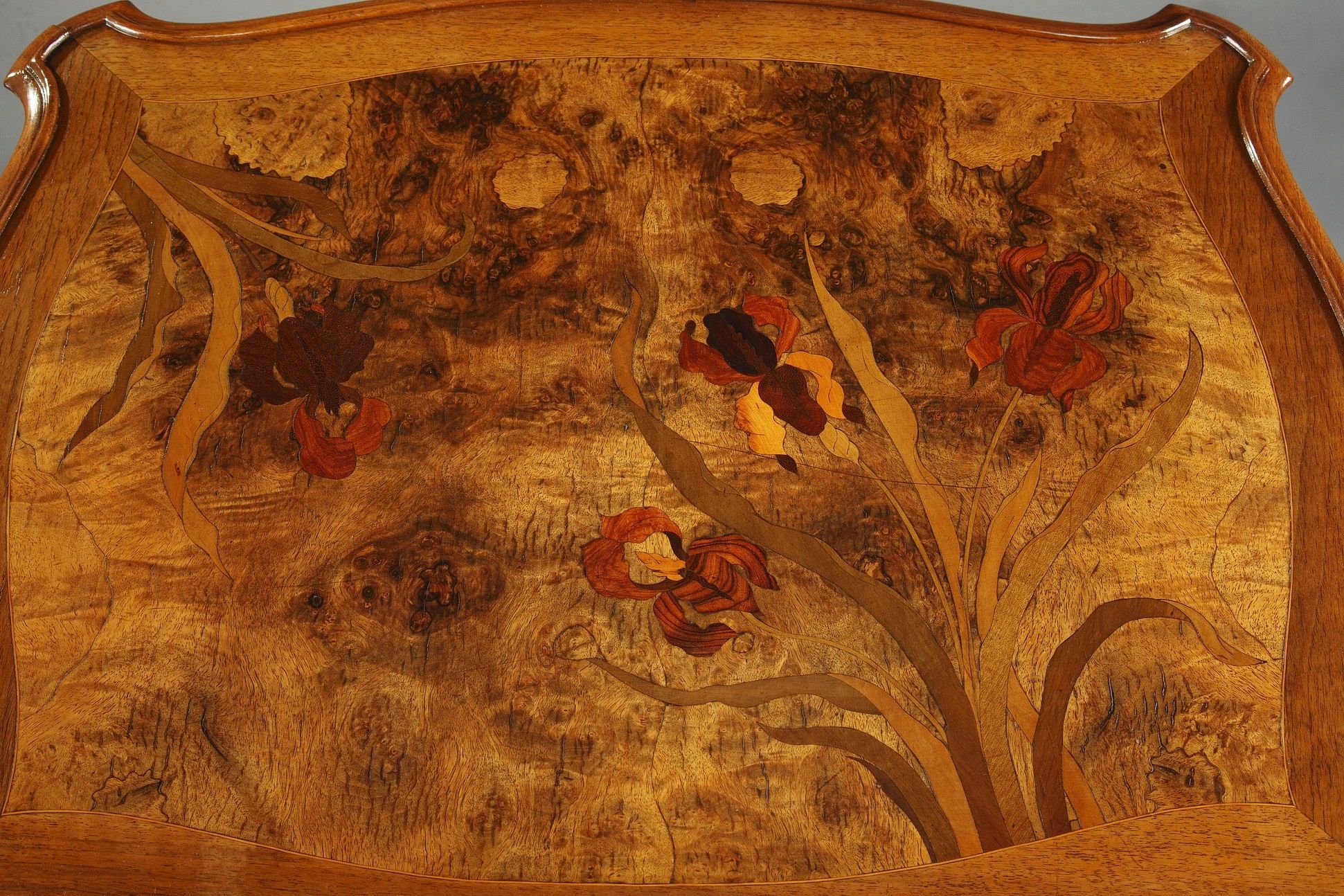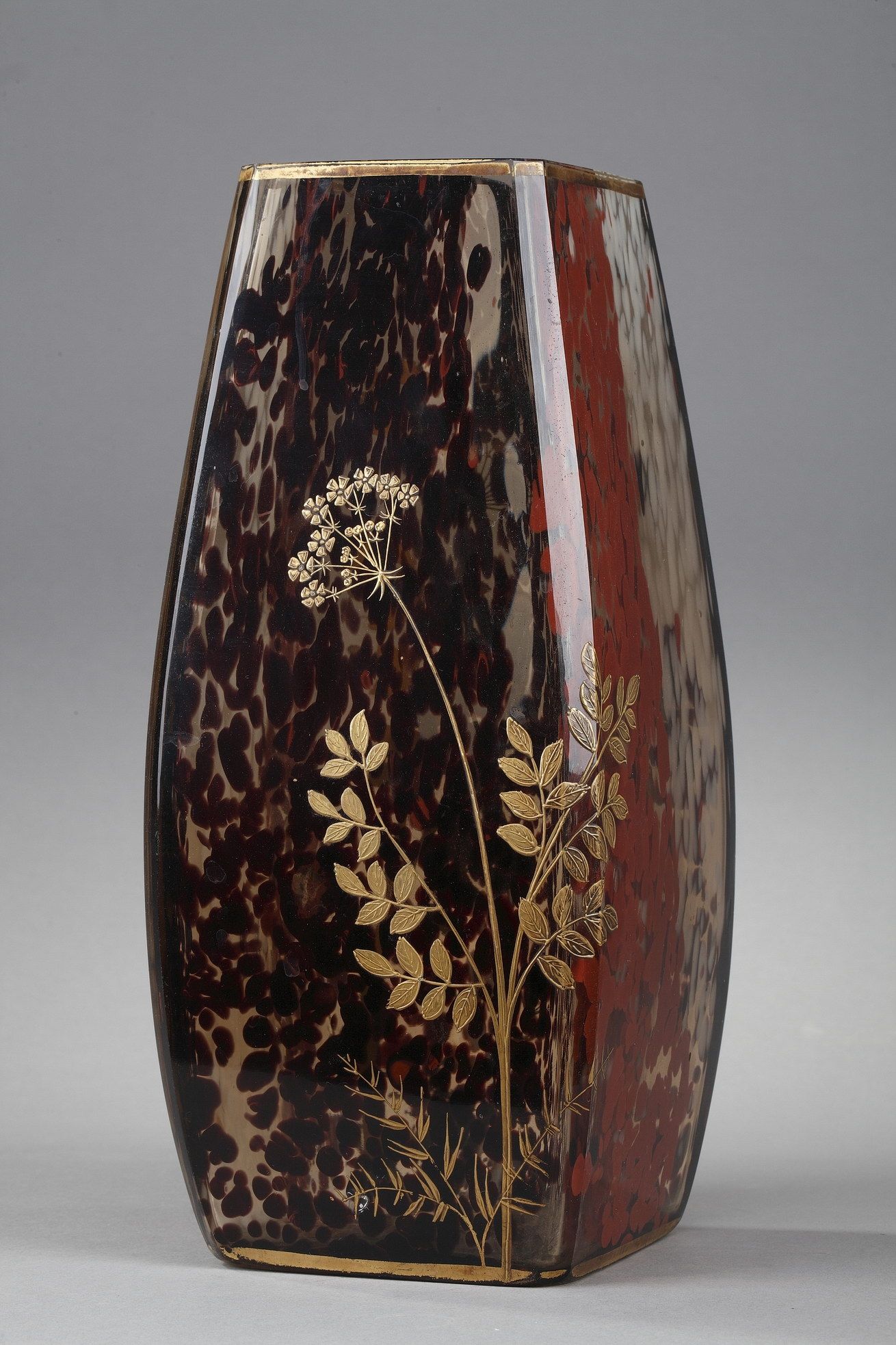Birth of the Art Nouveau style
The desire to create a new art, understood as a new art form, appeared very early, at the end of the 18th century, and preoccupied many theorists and artists throughout the 19th century. It was Johann Heinrich Füssli (1741-1825), the British Romantic writer and painter, who first introduced the new forms, the first use of arabesque and curved lines, which were to become the signature of the Art Nouveau style.
 Bronze inkwell by Albert Marionnet, Art Nouveau period
Bronze inkwell by Albert Marionnet, Art Nouveau period
Stemming from the romantic theories of the 19th century, Art Nouveau was based on a break with classicism and in reaction to an industrialized society. Quickly recognized as an international movement, Art Nouveau - known as Tiffany in the United States, Arts and Crafts in England, Jugenstil in Germany and Stile Liberty in Italy - made its mark in France in the early 1890s. It was Siegfried Bing, a German-born French art dealer, collector and patron of the arts, who gave the new style the name by which it is known today, by opening an art gallery in 1895, which he called "L'Art nouveau".
Art Nouveau aesthetics
Conceived as the art of freedom, Art Nouveau imposed no rules on artists. The norms of austere academicism are pulverized, making Art Nouveau a transgressive art at the center of which nature, women and eroticism become essential elements. Internationally, artists were united in the arabesque, organic, fluid form and reference to sensuality.
 Terracotta sculpture signed Capaldo
Terracotta sculpture signed Capaldo
Conceived as total art, the fruit of the Romantic theories of Gesamtkunstwerk (total work of art in German), Art Nouveau covers all areas of life. It can be found in music, painting, furniture, silverware, architecture and glassware.
The role of nature in the Art Nouveau style
Detail of marquetry from an Art Nouveau table
The basic aesthetic principle governing Art Nouveau was nature. The English critic John Ruskin placed nature at the heart of aesthetic and ethical life. For Ruskin's followers, as for Art Nouveau's decorators, nature replaced historicism by making a universal language available to all. In the wake of these pantheistic theories, man became one with nature. Art Nouveau volumes were thus able to blend human and natural forms in a new vision of the universe. The result was a heightened interest in the natural world and a true cult of nature, studied in its most varied forms.
The place of women in Art Nouveau aesthetics
Influenced by the poetry of Baudelaire and Mallarmé, as well as Symbolism, Art Nouveau gave pride of place to women, placed in mystical and occult situations. The female image was explored in posters, illustrations, sculptures, lamps and furniture. Among the most recurrent themes: diabolical beauty, the perfidious woman and the sensual woman.
 Large bronze vase after Marcel Debut
Large bronze vase after Marcel Debut
Lart nouveau artists
The great names of the 1900s are world-famous: Daum, Gallé, Mucha, Majorelle, Horta, Gaudi, Guimard, Lalique, Grasset, Bugatti... But many other artists and decorators active at the turn of the century were carried away by the ideals of Art Nouveau: Mary Golay, Emile Vernier and Marcel Debut.
Speckled glass vase attributed to Ernest Léveillé, Art Nouveau period
In an international spirit, these artists work with both traditional media and the most varied techniques, constantly inventing new processes: wood, iron, glass, paint, lithography, ceramics, porcelain, advertising posters, enamel, opal...
Art nouveau posters
It was in graphic art, and posters in particular, that the Art Nouveau style found one of its most effective supports. Developments in printing techniques, particularly color lithography, led to a spectacular boom in large-format posters, which flooded public spaces from 1890 onwards. Poster production lends itself particularly well to the Art Nouveau aesthetic. Line, plane and flat motifs were key to the success of most products produced around 1900. Strong, usually black outlines, flat tints of color and organic curves made up portraits, compositions and interior scenes.
Triumph and decadence of Art Nouveau: 1890-1914
The Art Nouveau style reached its peak between 1890 and 1905, and triumphed at the 1900 World's Fair. Throughout the first decade of the 20th century, Art Nouveau was everywhere, adorning every type of product.
The ornamental, highly decorative images were sharply criticized by its opponents, however, and led to an evolution of Art Nouveau towards a much less sophisticated style, devoid of the superfluous. Its forms became more sober and geometric, giving way to Art Deco, which took over completely from 1920 onwards.
Bibliography
- L'Art nouveau: la révolution décorative, exhibition at the Pinacothèque de Paris, April 18 - September 8, 2013, Paris, Skira, 2013.
- Alphonse Mucha, exhibition at the Musée du Luxembourg, September 12, 2018 - January 27, 2019, Paris, Editions de la Réunion des musées nationaux - Grand Palais, 2019.




